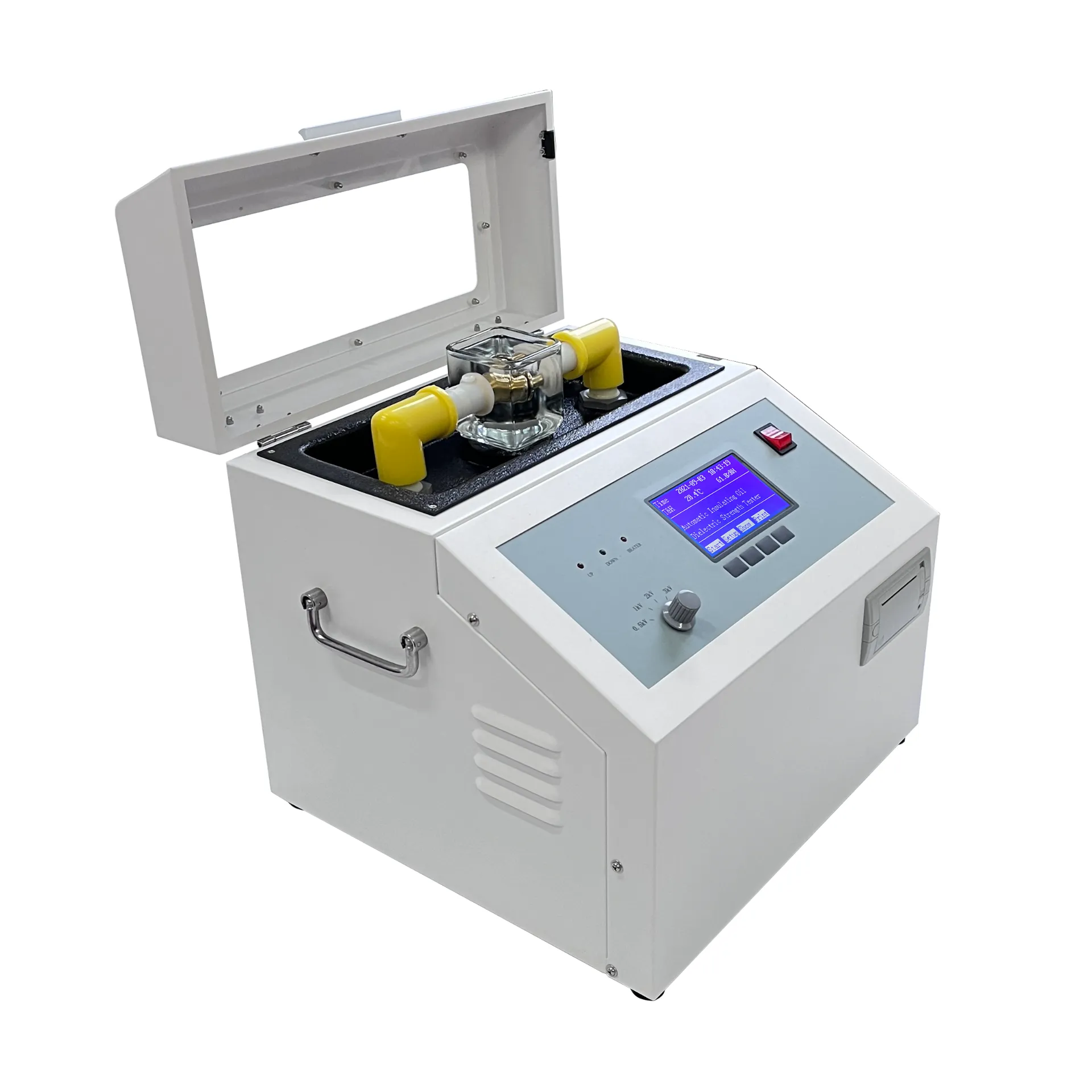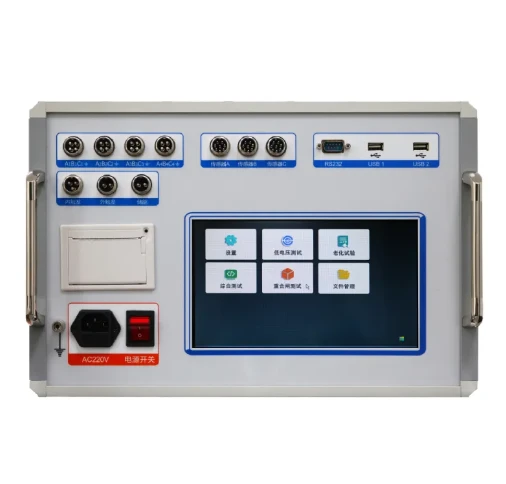TEL:
+86-0312-3189593
 English
English

Telephone:0312-3189593

Email:sales@oil-tester.com

-
 Afrikaans
Afrikaans -
 Albanian
Albanian -
 Amharic
Amharic -
 Arabic
Arabic -
 Armenian
Armenian -
 Azerbaijani
Azerbaijani -
 Basque
Basque -
 Belarusian
Belarusian -
 Bengali
Bengali -
 Bosnian
Bosnian -
 Bulgarian
Bulgarian -
 Catalan
Catalan -
 Cebuano
Cebuano -
 China
China -
 China (Taiwan)
China (Taiwan) -
 Corsican
Corsican -
 Croatian
Croatian -
 Czech
Czech -
 Danish
Danish -
 Dutch
Dutch -
 English
English -
 Esperanto
Esperanto -
 Estonian
Estonian -
 Finnish
Finnish -
 French
French -
 Frisian
Frisian -
 Galician
Galician -
 Georgian
Georgian -
 German
German -
 Greek
Greek -
 Gujarati
Gujarati -
 Haitian Creole
Haitian Creole -
 hausa
hausa -
 hawaiian
hawaiian -
 Hebrew
Hebrew -
 Hindi
Hindi -
 Miao
Miao -
 Hungarian
Hungarian -
 Icelandic
Icelandic -
 igbo
igbo -
 Indonesian
Indonesian -
 irish
irish -
 Italian
Italian -
 Japanese
Japanese -
 Javanese
Javanese -
 Kannada
Kannada -
 kazakh
kazakh -
 Khmer
Khmer -
 Rwandese
Rwandese -
 Korean
Korean -
 Kurdish
Kurdish -
 Kyrgyz
Kyrgyz -
 Lao
Lao -
 Latin
Latin -
 Latvian
Latvian -
 Lithuanian
Lithuanian -
 Luxembourgish
Luxembourgish -
 Macedonian
Macedonian -
 Malgashi
Malgashi -
 Malay
Malay -
 Malayalam
Malayalam -
 Maltese
Maltese -
 Maori
Maori -
 Marathi
Marathi -
 Mongolian
Mongolian -
 Myanmar
Myanmar -
 Nepali
Nepali -
 Norwegian
Norwegian -
 Norwegian
Norwegian -
 Occitan
Occitan -
 Pashto
Pashto -
 Persian
Persian -
 Polish
Polish -
 Portuguese
Portuguese -
 Punjabi
Punjabi -
 Romanian
Romanian -
 Russian
Russian -
 Samoan
Samoan -
 Scottish Gaelic
Scottish Gaelic -
 Serbian
Serbian -
 Sesotho
Sesotho -
 Shona
Shona -
 Sindhi
Sindhi -
 Sinhala
Sinhala -
 Slovak
Slovak -
 Slovenian
Slovenian -
 Somali
Somali -
 Spanish
Spanish -
 Sundanese
Sundanese -
 Swahili
Swahili -
 Swedish
Swedish -
 Tagalog
Tagalog -
 Tajik
Tajik -
 Tamil
Tamil -
 Tatar
Tatar -
 Telugu
Telugu -
 Thai
Thai -
 Turkish
Turkish -
 Turkmen
Turkmen -
 Ukrainian
Ukrainian -
 Urdu
Urdu -
 Uighur
Uighur -
 Uzbek
Uzbek -
 Vietnamese
Vietnamese -
 Welsh
Welsh -
 Bantu
Bantu -
 Yiddish
Yiddish -
 Yoruba
Yoruba -
 Zulu
Zulu
جنوری . 30, 2025 03:54
Back to list
bdv transformer oil
Types of transformer oil testing Enhancing Reliability and Performance
4. Acidity or Neutralization Number Testing Acid formation in transformer oil signals the onset of oil degradation, which can lead to sludge formation and further oxidation. The acidity test measures the total acid number (TAN) in the oil, indicating whether the oil has started to degrade and if corrosion of the metallic parts is likely. Regular acidity testing allows operators to decide when to replace or treat the oil with a regeneration process, prolonging the transformer's operational life while maintaining peak efficiency. 5. Interfacial Tension (IFT) Interfacial tension testing assesses the oil's ability to resist emulsification with water. A decrease in IFT values can indicate the presence of contaminants and degradation by-products. Monitoring changes in IFT can help identify insulation problems and predict serviceability of the transformer oil, acting as an early warning system for potential breakdowns. 6. Dielectric Breakdown Voltage Test This test is fundamental to ensure the insulating performance of transformer oil. It measures the maximum voltage the oil can withstand without electrical breakdown. Factors that affect the dielectric strength include moisture, particulates, and dissolved gases. Regular testing ensures that the oil maintains its insulative properties, preventing electrical failures that can cause transformer damage or outages. 7. Polychlorinated Biphenyls (PCBs) Testing Although PCBs are banned, transformers manufactured before the regulations may still contain these toxic compounds. PCB testing is crucial for auditing and replacing old oil, ensuring environmental compliance and safety. Testing not only helps in preventing environmental pollution but also assists in maintaining a cleaner oil inventory, contributing to a safer and more efficient electrical system. These transformer oil tests are fundamental not just for the health and functionality of transformers but also for the reliability of the entire electrical grid. Advanced analytical techniques and regular routine assessments allow timely detection of faults, enhancing the safety, performance, and longevity of transformers. Moreover, the expertise and authority of trained technicians and certified laboratories ensure that these tests are conducted with precision, offering trustworthy and actionable data. Ultimately, consistent transformer oil testing is a strategic investment in the stability and efficiency of power distribution systems worldwide.


4. Acidity or Neutralization Number Testing Acid formation in transformer oil signals the onset of oil degradation, which can lead to sludge formation and further oxidation. The acidity test measures the total acid number (TAN) in the oil, indicating whether the oil has started to degrade and if corrosion of the metallic parts is likely. Regular acidity testing allows operators to decide when to replace or treat the oil with a regeneration process, prolonging the transformer's operational life while maintaining peak efficiency. 5. Interfacial Tension (IFT) Interfacial tension testing assesses the oil's ability to resist emulsification with water. A decrease in IFT values can indicate the presence of contaminants and degradation by-products. Monitoring changes in IFT can help identify insulation problems and predict serviceability of the transformer oil, acting as an early warning system for potential breakdowns. 6. Dielectric Breakdown Voltage Test This test is fundamental to ensure the insulating performance of transformer oil. It measures the maximum voltage the oil can withstand without electrical breakdown. Factors that affect the dielectric strength include moisture, particulates, and dissolved gases. Regular testing ensures that the oil maintains its insulative properties, preventing electrical failures that can cause transformer damage or outages. 7. Polychlorinated Biphenyls (PCBs) Testing Although PCBs are banned, transformers manufactured before the regulations may still contain these toxic compounds. PCB testing is crucial for auditing and replacing old oil, ensuring environmental compliance and safety. Testing not only helps in preventing environmental pollution but also assists in maintaining a cleaner oil inventory, contributing to a safer and more efficient electrical system. These transformer oil tests are fundamental not just for the health and functionality of transformers but also for the reliability of the entire electrical grid. Advanced analytical techniques and regular routine assessments allow timely detection of faults, enhancing the safety, performance, and longevity of transformers. Moreover, the expertise and authority of trained technicians and certified laboratories ensure that these tests are conducted with precision, offering trustworthy and actionable data. Ultimately, consistent transformer oil testing is a strategic investment in the stability and efficiency of power distribution systems worldwide.
Previous:
Latest news
-
Exploring the Main Types of Industrial Endoscopes and Their Applications Across IndustriesNewsJul.04,2025
-
Testing Equipment Industry Sees Major Advancements in 2025: Smart & Precision Technologies Lead the WayNewsJun.06,2025
-
Applications of Direct Current Generators in Renewable Energy SystemsNewsJun.05,2025
-
Hipot Tester Calibration and Accuracy GuidelinesNewsJun.05,2025
-
Digital Circuit Breaker Analyzer Features and BenefitsNewsJun.05,2025
-
Benefits of Real-Time Power Quality Monitoring Devices for Industrial EfficiencyNewsJun.05,2025



